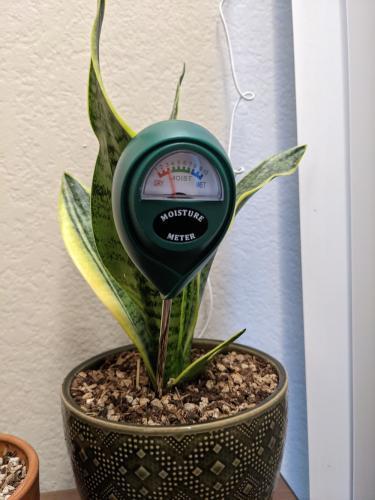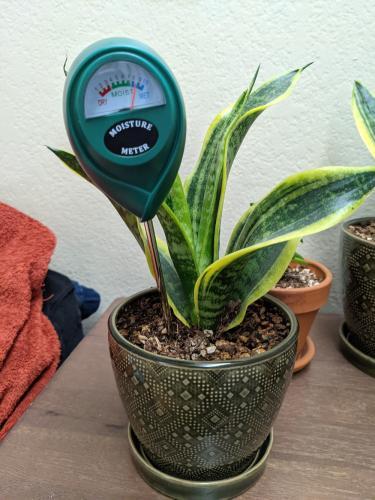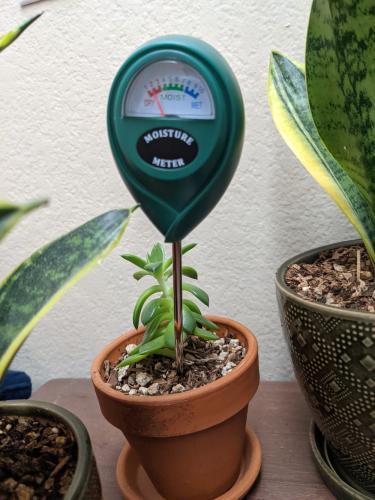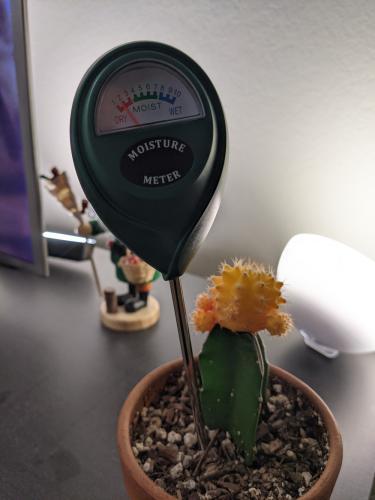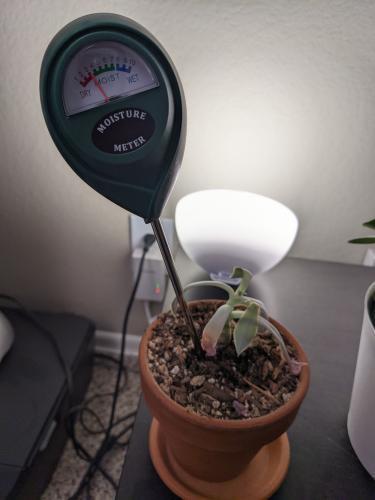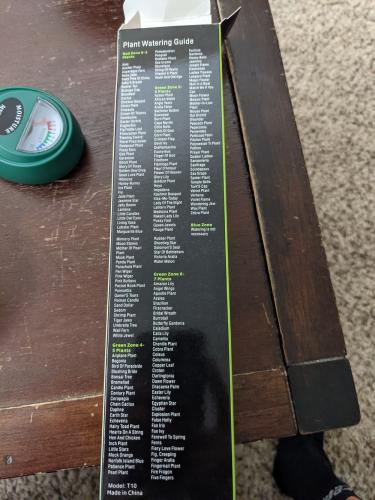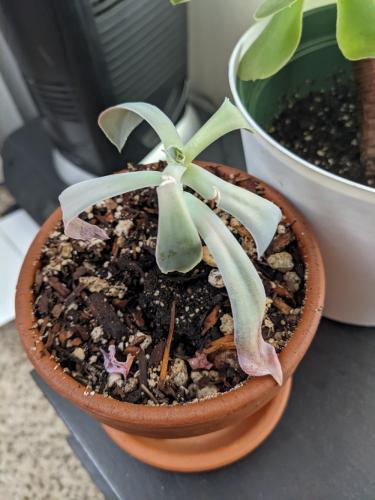
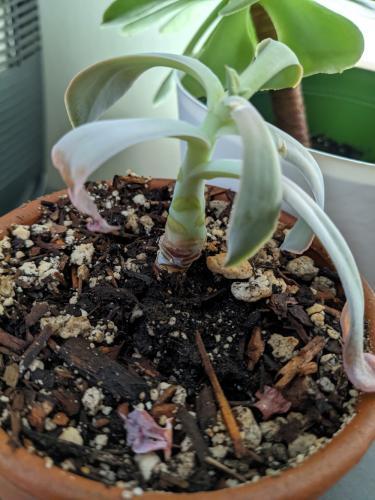

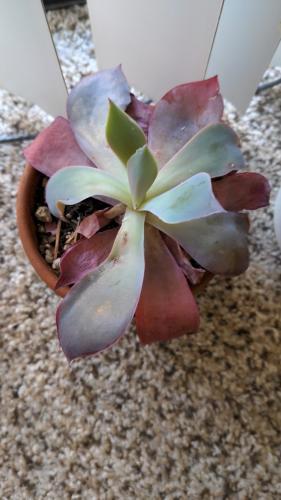
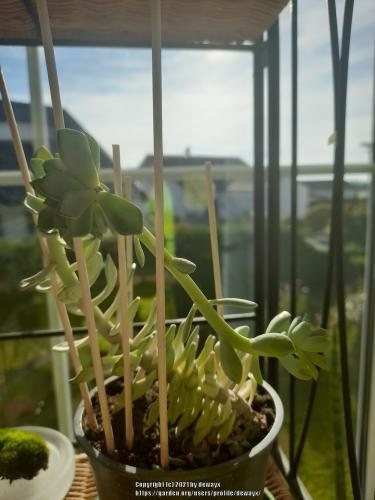 That's what kinda growth you can expect if you water more as response to overfeeding. Don't worry, you're not alone XD
That's what kinda growth you can expect if you water more as response to overfeeding. Don't worry, you're not alone XD

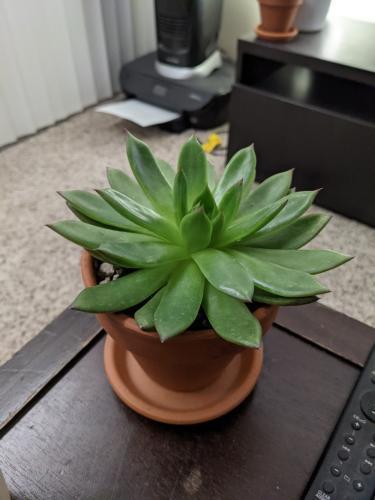
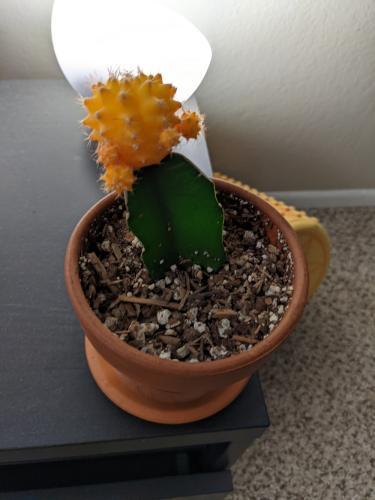
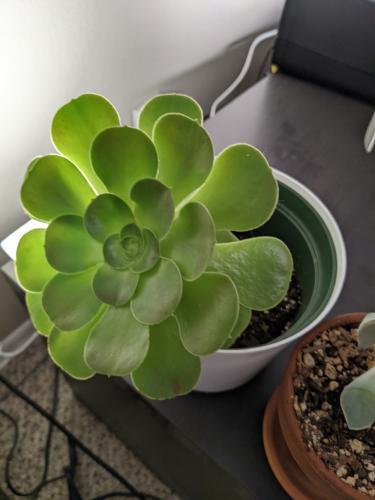

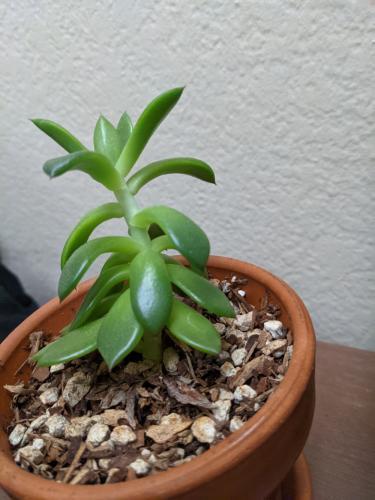
CPPgardener said:More sun, more sun, more sun. Indirect light just won't work for plants that want at least half a day of actual, direct, sun. Your other option is plant grow lights. Changing the watering won't do any good unless you change the light.
Succulents can be low care plants, but they MUST have at least some direct sun.
bucsnation1984 said:
The reason I'm thinking I'm underwatering is that the plant leaves were all shriveled up and crispy. They remove easily when you pull them off....
needrain said:
Two things in your last posts. First, some plant simply require more light than others. Those Sansevierias in your photos will manage a lot lower light than the plant in your last photo which is showing signs of etoliation. It's possible the leaves turning down at the bottom are a response to that. They are repositioning so their surface catches more light. The real tip off is the slender growth and the increasing space between the leaves along the upper part of the stem. That's etoliation in progress, I think, and will only get worse as the plant grows unless it receives more light. It's a problem I contend with every winter when I have to move plants indoors to low light conditions.
Second. The leaves all shriveled indicate a historical problem or natural shedding of old growth as new growth above takes precedence. This is a natural phenonemon for a lot of plants and is just a part of their being living things. But they may also indicate compromised roots. That can be harder to identify since both being too wet or too dry for too long can cause the same effect. It could also be damage from some kind of soil dwelling insect. That seems less likely to me, but still possible. Hard to know. Best is usually to try and determine the moisture in the potting medium if you can. If you can determine it's really dry, then make sure it gets soaked and then let it get almost dry again before giving it water again. If the plant has developed rot, that is likely to continue at a faster rate with the water. All you can do is watch and be patient. Sometimes, when a root ball has gotten too dry it will try to repel moisture. I find that sitting the container in water and letting it soak up from the hole in the container to the surface is the best means of overcoming that kind of dryness. If your container doesn't have a drain hole, then it's likely the plant stayed to wet. Containers without drainage can be bone dry on the upper part of the root ball and soggy on the bottom. That is an effective means of compromising the roots of plant until it reaches the point of no return.
dewayx said:Feeding directly after repotting is a good way to burn off roots, for old bonsai trees that needed a lot of root pruning at least XD
Don't know if that carries over 1:1 to echeveria and similar succulents, but overfeeding is a good way to get long internodes too while killing off mature leaves too early.
The most secure way to save it is to propagate its leaves or stem and just disregarding the base.
For that you'd cut a cm below the last healthy leaf and stick it into the ground or take a leaf off and let it sprout some roots, then plonk that into some soil.
Nothing is impossible to save though, but I couldn't and would cry for help here on the forum too XD
For Bonsai: If you overfed by a large amount and don't notice soon enough (accidental use of 14-14-14 instead of 5-5-5 in the same quantity as 5-5-5, nearly triple the nutrients concentration AND going by one tree with the fertilizer twice accidentally, happened to me on a ficus americana once) then you also need to overwater by a bit and salvage what's left afterwards. If you use solid fertilizer like i do, you can repot and completely bare-root the tree and rinse the roots, but only if you notice fast enough.
In my case, everything was too late and only thing I had left was to fight reverse osmosis (trees inability to suck in water if the mineral/nutrients concentration is higher outside than inside, or even lose water through the roots) and water twice a day. The tree shot out aerial roots like crazy in search for water, i put those in separate pots which i put onto the other pot. The tree got a hard prune two times that year and the next year it was on its way to recovery. It died 2017 of root lice and ants, still not fully recovered and root system still severely weakened.
I don't know how good this carries over to echeveria either, but I guess it's an issue all plants could face and depends heavily on the fertilizer concentration and contents.
One thing that definitely doesn't carry over is to water and prune more because pruning in succulents means more like chopping things up XD
That's what kinda growth you can expect if you water more as response to overfeeding. Don't worry, you're not alone XD
bucsnation1984 said:
Okay, so do you guys all think everything except my snake plants basically needs to be outside? Not sure I should've purchased these then. I live in an apartment. lol
I have the pots with the drain holes at the bottom...I purchased a water meter on amazon yesterday so I can be more consistent with the watering. Before I think I was watering once a week, now it's really inconsistent. I think it's been a month since last watering.
Funny you mentioned setting the plant in a container and let it soak. I literally just watched a video showing this for maintenance.
I don't think they sell that here. At least I couldn't find it on amazon. She said it's a soil wetter.
Sorry for the stupid questions. lol
Baja_Costero said:Those plants don't need to be outside if they can be right inside a southerly facing window (pointing anywhere from SW to SE).
The MG products are almost always dosed way more than your plants need or will be able to use indoors. Just out of curiosity, what's the volume coming out of the pump, approximately (using a measuring spoon to get a rough estimate)? For reference, I use the regular MG granulated formula but I use it at 1/20 the recommended dose (that is 5% of what they say to use) for my outdoor plants.
needrain said:
You saw a video that's special for soaking? Never heard of that. By soaking from the bottom you just need a bowl, bucket or some other container that holds water and is deep and wide enough to set the container with the plant in. Then add water and let the plant soak it up via the drain hole. I like for the surface to be damp to touch if I'm working with something that feels really dry, but sometimes it takes too long and I'll judge it by weight or probing beneath the surface to see how high the moisture has risen in the rootball. Some people use a bamboo skewer and check the moisture that way. I can't imagine buying a special container for that. Send me the link for the video if you can. I'd like to see it.
.
